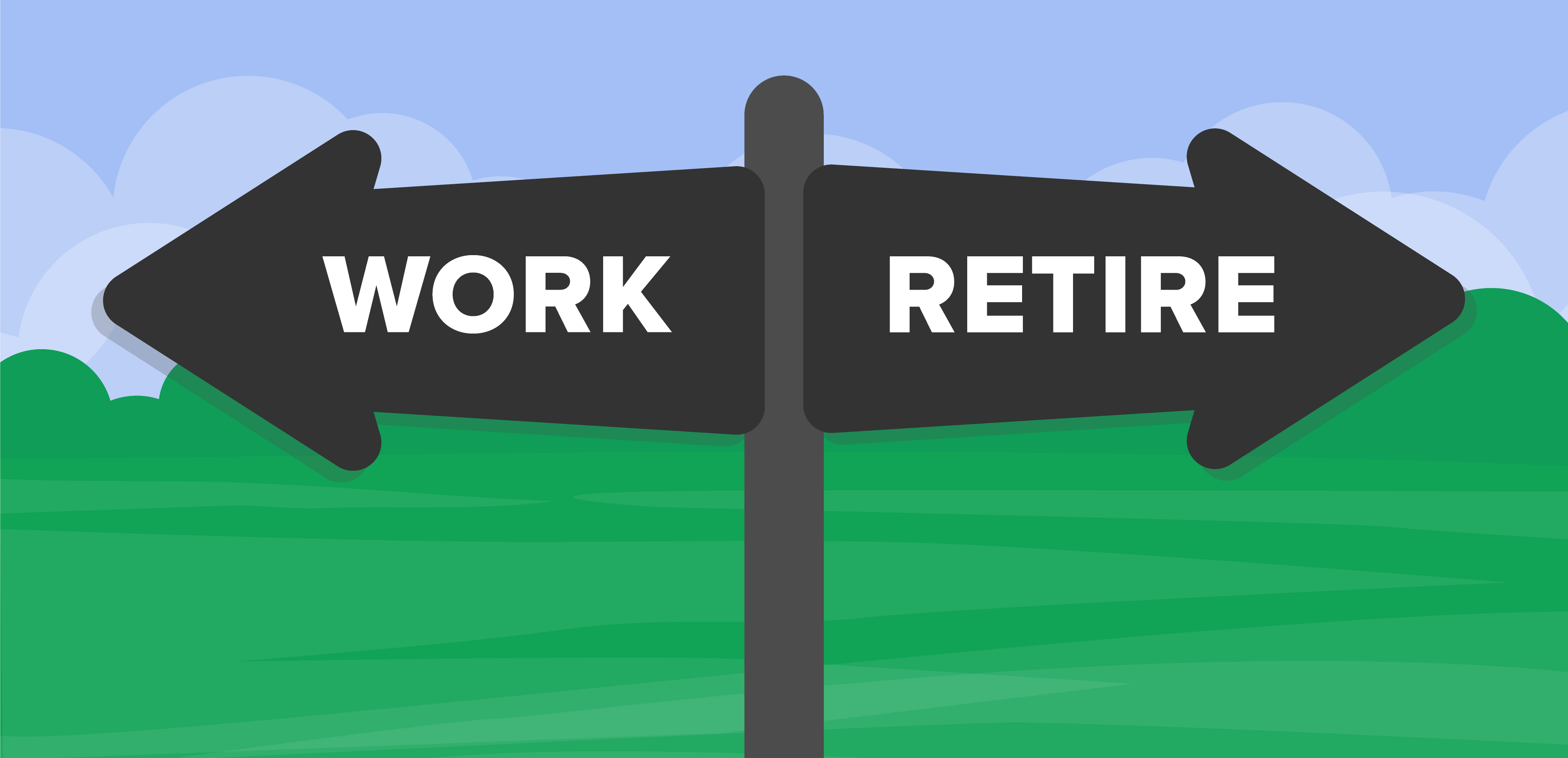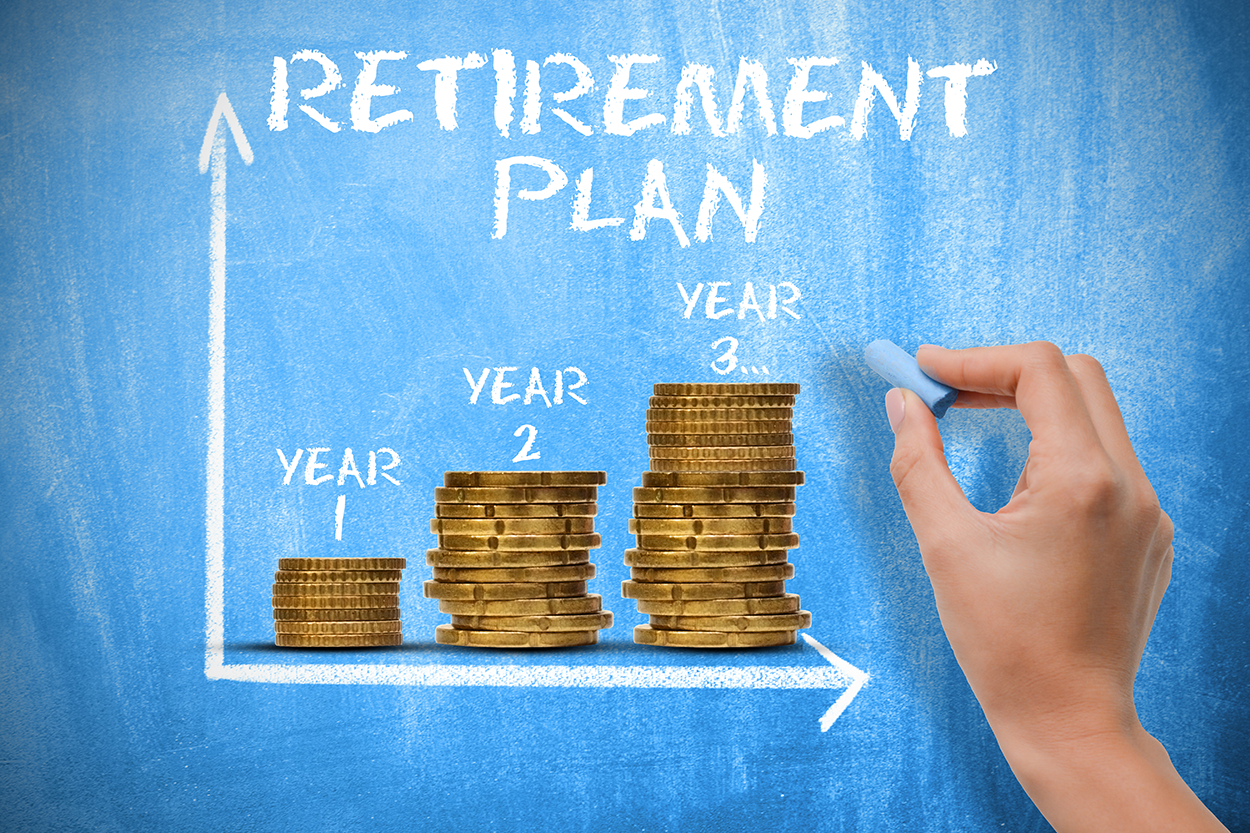In this lesson, you will learn about retirement planning and how much you need. Specifically, this lesson will cover the following:
1. What Is Retirement Planning?
Retirement might feel like a lifetime away, or maybe it’s approaching faster than you expected. Either way, planning for it now is one of the smartest financial decisions you can make. Many people put off retirement planning because they assume they’ll have plenty of time to figure it out later. But the truth is, the sooner you start, the easier it becomes.
-
You’re 65 years old, waking up in your dream home, knowing that you have enough money saved to travel, spend time with family, and enjoy life without financial stress. Now, imagine the opposite—reaching retirement age and realizing you don’t have enough saved, forcing you to work longer or make drastic lifestyle changes. The difference between these two realities comes down to how well you plan today.
So, how do you make sure future-you is financially secure? In this lesson, we’ll break down what retirement planning really means, how much you need to save, the different retirement accounts available, and simple strategies to get started—even if you feel behind.

What Is Retirement Planning?
Retirement planning is about ensuring you have enough money to support yourself when you stop working. Unlike when you’re employed and receive a paycheck, retirement means relying on savings, investments, and possibly Social Security to cover your expenses.
Most people assume Social Security will take care of them, but here’s a reality check: Social Security was never meant to fully fund retirement. It’s designed to supplement savings, not replace them. The average monthly Social Security check is around $1,800, which may not be enough to cover rent, health care, and daily living costs. That’s why personal savings and investments are so important.
One crucial factor to keep in mind is inflation—the cost of living increases over time. What costs $50,000 per year today may cost $80,000 or more in 20 years due to inflation. If you don’t plan accordingly, you may find yourself short on money even if you’ve saved what you initially thought was enough.
-
To estimate your future Social Security benefits, you can create a mySocialSecurity account at
www.ssa.gov. This allows you to check your earnings history, see your projected retirement benefits, and understand how different retirement ages affect your monthly payments.
-
Retirement, as we think of it today, is a modern idea. For most of history, people worked until they were too old or sick to continue, relying on family or community support in old age. Here’s how retirement evolved over time:
Ancient Times: In societies like Ancient Rome and China, soldiers and government workers sometimes received pensions, but the average person worked for life.
1880s—The First Retirement Plan: In 1889, German leader Otto von Bismarck created the first government pension system, setting the retirement age at 70 (later lowered to 65). This was one of the first formal retirement programs in the world.
1935—Social Security in the United States: During the Great Depression, President Franklin D. Roosevelt introduced Social Security to provide financial support for older Americans. At the time, most people didn’t live past 65, so relatively few actually received benefits.
1950s–1980s—The Shift to Personal Savings: After World War II, pensions became common, allowing workers to retire with a guaranteed income. However, by the 1980s, companies started replacing pensions with 401(k) plans, shifting the responsibility of saving for retirement from employers to workers.
Today—Retirement Is Up to You: With people living longer and traditional pensions disappearing, individuals now rely on their workplace retirement savings like 401(k)s, personal savings, Social Security, and investments to fund their retirement. Planning early is essential to having enough money to stop working when you want to.
Now that you understand what retirement is and why Social Security alone isn’t enough, the next big question is how much you actually need to retire. The answer depends on factors like your lifestyle, where you plan to live, and how long you’ll need your money to last.
Many people underestimate the cost of retirement, assuming expenses will drop significantly. While some costs may go down, others—like health care and travel—often increase. That’s why having a clear savings goal is essential. In the next section, we’ll break down different ways to estimate how much you need and help you calculate your own retirement savings target.
-
- Retirement
- The stage of life when a person stops working full time and relies on savings, investments, or other income sources to cover living expenses.
- Retirement Planning
- The process of saving, investing, and making financial decisions to ensure enough money is available to live comfortably after leaving the workforce.
- Social Security
- A government program that provides monthly income to retirees, funded through payroll taxes and designed to supplement but not fully replace retirement savings.
2. How Much Do You Need to Retire?
One of the biggest mistakes people make when planning for retirement is underestimating how much they will actually need to spend. Many assume that their expenses will dramatically decrease once they stop working, but that isn’t always the case. While some costs, like commuting or work-related expenses, may go down, others—like health care, travel, and even entertainment—can increase.
A clear understanding of your expected retirement expenses can help you plan better and avoid financial surprises. Let’s break it down into two main categories: essential expenses and lifestyle expenses.

Essential Expenses: The Nonnegotiables
These are the costs that you must cover no matter what. Even if you plan for a simple lifestyle in retirement, these basic expenses won’t disappear.
1. Housing Costs
- Will you still have a mortgage, or will your home be paid off?
- If you rent, will your rent increase over time?
- Will you downsize or move to a lower-cost area?
- Property taxes and homeowner’s insurance can still be significant expenses, even if you own your home outright.
- Consider this: Housing is typically the largest expense for retirees. If your mortgage isn’t paid off, making extra payments before retirement could help reduce your financial burden later.
2. Health Care Costs
- Medicare starts at age 65, but it doesn’t cover everything. You’ll likely need supplemental insurance.
- Prescription drugs, co-pays, and out-of-pocket medical costs can add up quickly.
- Long-term care (such as assisted living or nursing homes) is expensive and not fully covered by Medicare. The average cost of a private room in a nursing home is over $100,000 per year.
- Consider this: A healthy 65-year-old couple retiring today is estimated to need $300,000+ just to cover health care costs throughout retirement.
3. Daily Living Expenses
- Food, utilities, phone, and internet bills will still need to be paid.
- If you plan to drive, you will need to pay for gas and car maintenance.
- Home maintenance costs—will you still be mowing your lawn or paying someone else to do it?
- Consider this: Many retirees are surprised by how much they continue to spend on everyday necessities, so budgeting for these is crucial.
4. Taxes
- Many retirees forget that Social Security and 401(k) withdrawals can be taxed.
- If you have investments, capital gains taxes could apply.
- If you plan to move to another state, check its retirement tax laws—some states tax retirement income more than others.
- Consider this: A tax-efficient withdrawal strategy can help your money last longer.
Lifestyle Expenses: What Will Retirement Look Like for You?
These are the want-to-have expenses that make retirement enjoyable but are not necessary for survival. The more you plan for these, the more flexibility and freedom you’ll have in retirement.
1. Travel and Leisure
- Do you dream of traveling the world or taking frequent trips to visit family?
- Will you buy an RV, buy a second home, or take cruises?
- Even small trips and weekend getaways can add up over time.
- Consider this: Many retirees spend the most money in their first 10 years of retirement when they are more active and eager to explore new experiences.
2. Hobbies and Activities
- Do you want to take up golf, join a fitness club, or enroll in classes?
- Will you start a new hobby that requires expensive equipment or supplies?
- Some retirees start small businesses or turn hobbies into side incomes.
- Consider this: Retirement is a time to enjoy life, but hobbies and activities can get expensive. Budgeting for them in advance can help you avoid financial stress later.
3. Helping Family or Charity
- Will you financially support adult children or help pay for grandchildren’s education?
- Do you plan to donate regularly to causes you care about?
- Consider this: Many retirees underestimate how much they will give away to family or charities. Factor this into your retirement plan if it’s important to you.
It’s important to remember that spending in retirement doesn’t remain constant—it typically follows a
spending curve:
- Early Retirement (60s to early 70s): There is greater spending on travel, hobbies, and home improvements. Many retirees use this time to check off bucket list experiences.
- Mid-retirement (Mid-70s to 80s): Spending gradually decreases as travel slows and health becomes a bigger focus.
- Late Retirement (80s+): Medical and long-term care costs often rise, while other discretionary spending declines.
One of the biggest financial risks in retirement is running out of money too soon. People are living longer than ever, and a 65-year-old today has a 50% chance of living into their 90s. That means you may need to stretch your savings for 30+ years.

The best way to avoid financial stress in retirement is to overestimate your needs and start saving as early as possible. By planning for essential expenses and lifestyle goals, you’ll set yourself up for a retirement that is both secure and fulfilling.
-
- Essential Expenses
- Necessary costs in retirement, such as housing, food, health care, and utilities, that must be covered no matter what.
- Lifestyle Expenses
- Optional costs like travel, hobbies, dining out, and entertainment that enhance retirement but are not required for basic living.
- Spending Curve
- The pattern of how retirees spend money over time, typically higher in early retirement, decreasing in mid-retirement, and rising again later due to health care costs.
2a. Retirement Calculations
The million-dollar question—literally: How much do you need? The answer depends on factors like where you live, your lifestyle, and how long you’ll need the money.
80% Rule
A common rule of thumb is the 80% rule, which suggests that you’ll need about 80% of your preretirement income each year to maintain your lifestyle.
-
EXAMPLE
If you make $60,000 per year before retiring, you should plan for about $48,000 per year in retirement income. If you expect to be retired for 25 years, that adds up to $1.2 million in savings.


-
Your turn! Apply the 80% rule to the following individual. Click the “+” button to see if you are correct.
Sarah makes $72,000 per year before she plans to retire. What should she expect to have in savings if she is planning on 30 years of retirement?Based on Sarah’s current income of $72,000 using the 80% rule, she would need $57,600 a year in retirement income (72,000 × 0.80 = 57,600). Since she is projecting 30 years of retirement, 57,600 × 30 = 1,728,00. She would need to have $1,728,000 in savings.
-
Now, let’s figure out how much you might need to save for retirement based on your own income. Follow these steps:
- Write down your current annual income: $ _____
- Multiply that by 0.8 (to estimate 80% of your income needed in retirement): $_____
- Decide how many years you expect to be retired (25 years is a common estimate).
- Multiply your retirement income need from Step 2 by your expected years in retirement:
- Example: If Step 2 is $50,000 and you plan to retire for 25 years →

This gives you a rough estimate of how much you’ll need to save for retirement. Keep in mind that investments and Social Security may help cover some of this amount, so savings goals can vary.
4% Rule
Another useful method is the 4% rule—this rule suggests that if you withdraw 4% of your savings each year, your money should last about 30 years assuming you keep it invested throughout retirement in a balanced portfolio of stocks and bonds.
-
EXAMPLE
Let’s say you want $40,000 per year from your savings. Using the 4% rule, you would need to save $1 million to make that work ($40,000 ÷ 4%).
-
- 4% Rule

-
Lisa earns $60,000 per year before retiring. Using the 80% rule, she estimates that she will need about 80% of her salary in retirement, which comes to $48,000 per year, to maintain her lifestyle. To see how much she needs to save, Lisa plans to use the 4% withdrawal rule, which means she can withdraw 4% of her total savings each year.
Question: How much does Lisa need to have saved by the time she retires in order to withdraw $48,000 per year?
Answer: To calculate this, divide the annual amount she needs by 0.04:
- Total Savings = $48,000 / 0.04 = $1,200,000
- So, Lisa needs to have $1.2 million saved by retirement to safely withdraw $48,000 per year.
Estimating how much you’ll need for retirement can feel overwhelming, but breaking it down into simple formulas—like the 80% rule and the 4% rule—gives you a clear starting point. While these methods provide rough estimates, they highlight a critical truth: Saving early and consistently is the key to financial security in retirement.
-
Let’s put both formulas together to help Maya understand her retirement needs. Maya is 38 years old, lives in a major city, and earns $95,000 per year as a marketing consultant. She plans to retire at 65 and wants to maintain her current lifestyle. Using the 80% rule, she estimates that she will need about 80% of her preretirement income each year in retirement. She also plans to follow the 4% withdrawal rule to make her savings last at least 30 years.
Calculate the answers to the following. When you are ready, reveal the answers by selecting the “+” button.
What This Means for Maya
To reach her goal, Maya will need to build a savings and investment plan that helps her reach $1.9 million by retirement. She can achieve this through a combination of maxing out her 401(k) contributions, contributing to a Roth or Traditional IRA, investing in a diversified portfolio to outpace inflation, and adjusting her savings as her income grows. We’ll talk more about the specific retirement plans in an upcoming lesson.
Even though $1.9 million sounds like a big number, the key is starting early and being consistent. The earlier Maya invests, the more time her money has to grow through compound interest, making it easier to reach her goal.
The exact amount you need will depend on factors like your lifestyle, health care costs, and other sources of income like Social Security or pensions. The good news? Even if you feel behind, small changes now can make a huge difference later. Increasing your savings rate, investing wisely, and making adjustments as you get closer to retirement can help ensure you have enough to live comfortably.
-
- 80% Rule
- A guideline suggesting retirees will need about 80% of their preretirement income each year to maintain their lifestyle.
- 4% Rule
- A strategy that allows retirees to withdraw 4% of their total savings each year to make their money last at least 30 years.
In this lesson, you learned what retirement planning is and why it’s important. You also learned about the 80% and 4% rule retirement calculations to determine how much you need to save.






